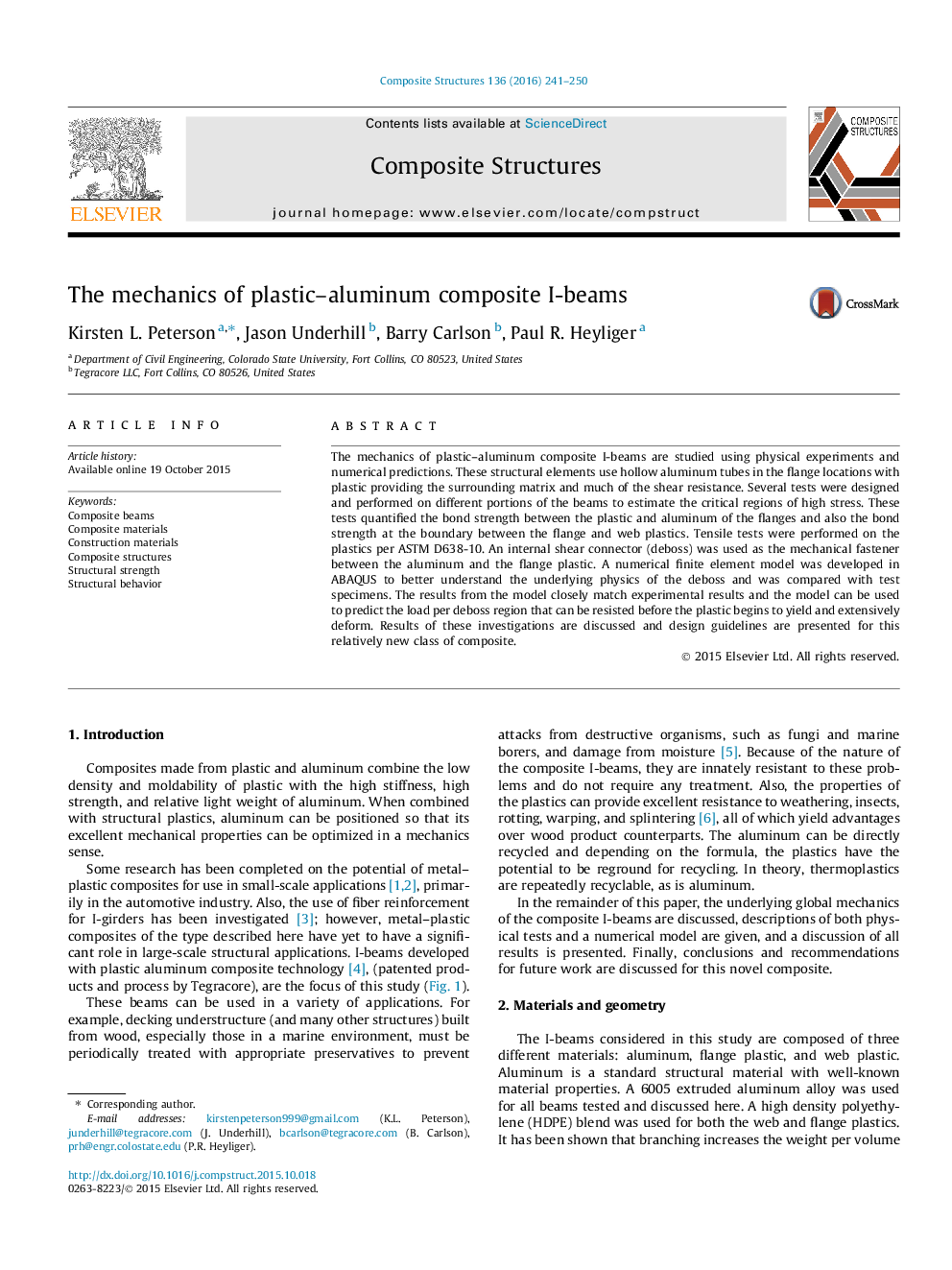| Article ID | Journal | Published Year | Pages | File Type |
|---|---|---|---|---|
| 6706318 | Composite Structures | 2016 | 10 Pages |
Abstract
The mechanics of plastic-aluminum composite I-beams are studied using physical experiments and numerical predictions. These structural elements use hollow aluminum tubes in the flange locations with plastic providing the surrounding matrix and much of the shear resistance. Several tests were designed and performed on different portions of the beams to estimate the critical regions of high stress. These tests quantified the bond strength between the plastic and aluminum of the flanges and also the bond strength at the boundary between the flange and web plastics. Tensile tests were performed on the plastics per ASTM D638-10. An internal shear connector (deboss) was used as the mechanical fastener between the aluminum and the flange plastic. A numerical finite element model was developed in ABAQUS to better understand the underlying physics of the deboss and was compared with test specimens. The results from the model closely match experimental results and the model can be used to predict the load per deboss region that can be resisted before the plastic begins to yield and extensively deform. Results of these investigations are discussed and design guidelines are presented for this relatively new class of composite.
Keywords
Related Topics
Physical Sciences and Engineering
Engineering
Civil and Structural Engineering
Authors
Kirsten L. Peterson, Jason Underhill, Barry Carlson, Paul R. Heyliger,
